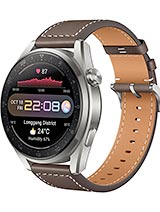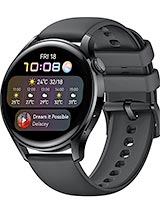A Dual Screen... Smartwatch?! - TicWatch Pro 4G Teardown! By JerryRigEverything
A while ago, this dual screen smartwatch caught my eye. So when Mobvoi, the maker of TicWatch, reached out and said they had a few extra watches laying around and wanted to sponsor a teardown, I told them I was definitely down... for the teardown. This watch has two screens - one layered right on top of the other. And I want to see how they work. If it's cool enough inside, maybe I'll give some watches away at the end of the video.
The TicWatch Pro is also one of the only Android watches that has 4G functionality.4G lets you make calls and send text messages when your phone isn't around. It works with Verizon here in the USA, and major carriers across Europe. Their website has more information about that. And there's also a version that comes without the 4G and it's a bit cheaper. Both versions, however, do support third party apps.
The reason we're all here though is the dual layered screen, which is quite possibly the coolest thing we've seen in a while. Let's get started. The dual screen thing is like a sandwich. You know how normal phones have a piece of glass on top of the AMOLED layer for that protection? Well this TicWatch, instead of just having a plain piece of glass on top, it uses a liquid crystal display. The LCD works as functional protection for the AMOLED underneath it while still being useful and displaying low resolution information like the time and the date.
The top screen draws so little power that the watch can last for 30 days in essential mode before needing to be recharged. It's pretty mind blowing. Tapping the screen turns off the liquid crystal display and allows the AMOLED to shine up through from underneath. The TicWatch Pro is also ip68 water resistant. So I'll just plop this one in the jar of ice water for the rest of the video.
The TicWatch Pro is built to the mill standard 810G, which means it's already been subject to a plethora of other tests like extreme temperature, vibration, and drop tests to make sure it can handle every day life. Running the Google Wear operating system, it does all the normal things like phone calls, notifications, alarms, heart rate, messages, and emails, and even Google Assistant. But like always, we're here more for the hardware. The top LCD panel is made from glass and is scratch resistant. Flipping the watch over to the underside, we find four T3 screw heads, which makes this guy significantly easier to take apart than the Apple Watch.
That thing was a glued shut nightmare. The back panel has one ribbon connecting it to the body of the watch. This ribbon handles the gold charging pins, the heart rate monitor, and there's even a little speaker down here at the bottom as well for the alarms and loudspeaker voice calls. There is a water damage indicator sticker inside like all smartphones have. This large orange rubber ring acts as the waterproofing gasket for the back panel.
There are three more screws holding the brain to the frame. These are regular Phillips head screws this time. Then the whole circuit board and battery can pop out from the frame. It's a pretty simple design so far. The screen and proximity sensor ribbons can just disconnect like little Legos.
The TicWatch Pro does have two side buttons to access the apps and stuff. They just press in, no rotating functionality. And in-between both of those buttons is the microphone hole with it's water repelling screen on the inside. I'll pull off the graphite tape over the metal shielding, which we'll remove as well in just a second. I'll disconnect the extension ribbon and the charging port pins, and then find the one remaining screw holding the motherboard to the back white plastics.
Then the circular motherboard can lift up and I can unplug the battery from the underside... just like another little Lego. The battery can come out of the white plastics easy enough. It's gently glued in. It's a 415 milliamp hour battery, which is over twice the capacity of an Apple Watch battery.
Not too shabby. The vibrator motor inside isn't taptic like we found inside of the Apple Watch. This is an eccentric rotating mass motor. A little more on the old school side of things, but still works just fine. The circuits that control this whole operation are underneath the metal shield.
Once that's pried away we can get our first look at the chips on the board, each of which have some of the thermal gooey stuff on top. Kingston, a popular memory brand with PC builders, makes this one gigabyte RAM chip and the processor is placed right below that. As I start fiddling with the screen though, I realize that in order for us to see both layers of screenage, I think we have to sacrifice the watch. There's not really a good way to save it. The watertight glue holding the screen halves together with the body is too permanent, which is a great thing for water resistance of course, but makes for a not so easy screen removal.
The proximity sensor can peel off easy enough. This is what tells the watch how bright it is outside and how bright the screen needs to be, as well as if something is covering the display or not, like your palm, so it can turn off the display when it's not being needed. You can see the light from my phone shining through both the transparent AMOLED layer, along with the transparent LCD layer. Dual transparent screens. Technology is pretty sweet.
Thumbs up for that. A little tugaroo on the display connector ribbons rips them clean off. But with a bit more persuasion we can separate the liquid crystal from the AMOLED. The super thin AMOLED display kind of cracks like a potato chip when pulled out from behind the LCD. It still looks pretty cool though.
The top display is an FSTN LCD which means film is super twisted to manic. It's in a positive configuration which means that the glass is transparent until the pixels are turned on. When the pixels are turned on, it turns the screen black making those opaque numbers that we saw earlier before I destroyed it. We can literally see the liquid from the liquid crystal leaking inside of the top broken layer. The LCD screen doesn't generate its own light, it just manipulates the crystals to form those black letters and counts on the ambient light to passively illuminate, which is how the watch can last for 30 days on one charge, if you're just using the top screen.
Using both screens brings the watch back to it's normal 2-5 day battery life. Personally I think it would look pretty cool if we took a transparent LCD display and just put the raw circuit board behind it. I think it's time to check on our cold, wet little friend over here. We've left him in the ice water for quite a while. And it looks like everything is still working.
Not too shabby. I'll be giving away 10 of these watches. I know, there's a whole lot of giveaways happening on my channel right now, but I'm sure there are no complaints. Mobvoi, the company that makes the TicWatch, is handling this one. I'll leave the link down in the video description with all the details.
So just come follow us both on Twitter, and enter the giveaway information with the link in the description. I'll be wearing this watch for the next few weeks. Maybe I'll do a followup video over on Twitter or something with my thoughts after using it for a while. I've been looking for a good GPS, fitness tracking, smartwatch, and this one just might be it. So come hang out with me on Twitter and Instagram.
And thanks a ton for watching. I'll see you around.
Source : JerryRigEverything


























